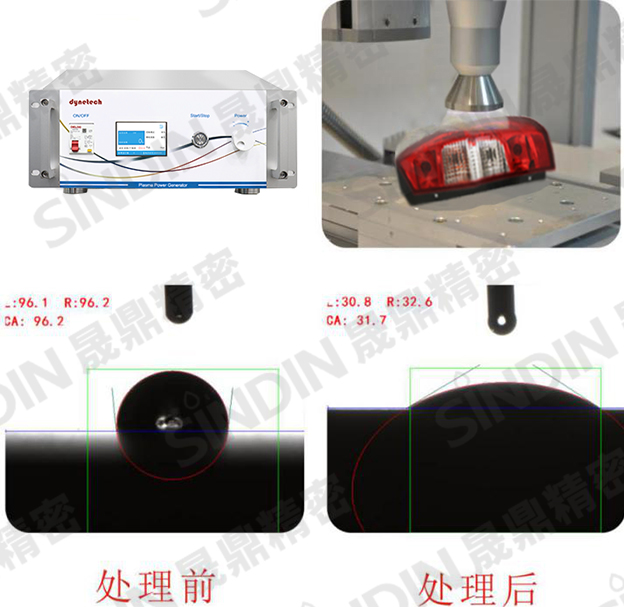With the development of the economy, the group of car owners is getting larger and larger, and the performance requirements of the car are getting higher and higher. When manufacturing cars, they are getting better and better. Plasma cleaning technology has improved the shape, actual operating comfort, feasibility, application performance and other requirements of automobiles.
Plasma cleaning effectively improves the reliability of automotive electronics
A large number of electronic systems with complex functions are used in automotive power and control systems, and the sealing of these automotive electronic products is very important, and the moisture-proof and anti-corrosion capabilities of components need to be tested. Plasma cleaning can effectively activate the surface of the product, improve the bonding force and reliability of the subsequent injection molding and glue filling processes, and reduce the occurrence of delamination and pinholes, thereby ensuring the safe and efficient operation of the electronic system.
The quality of any seal depends on the cleanliness of the contact surfaces. Plasma cleaning technology is applied in these key areas. This ensures effective, high-precision pretreatment of targeted areas of the material for a more durable and corrosion-resistant bond seal. , the plasma cleaning process is an ideal choice. In this type of plasma polymerization process, a compound monomer is specifically added to the plasma, resulting in a protective seal that is very resistant to corrosion.
Plasma cleaning effectively improves the reliability of power battery packs
Atmospheric plasma cleaners are often used for nanoscale cleaning and activation of metal casings and blue film surfaces during the assembly process of power batteries, without changing the material properties, improving the adhesion of welding, gluing or gluing, and ensuring reliability.
With the development of the economy, consumers have higher and higher requirements for the performance of automobiles, such as the appearance of automobiles, operating comfort, reliability, and durability. In order to meet the requirements of consumers, automobile manufacturers pay more attention to the optimization and improvement of interior and exterior decoration when producing automobiles.
Plasma cleaning effectively pretreats complex structural automotive interior parts
Plasma technology enables precise and fast environmentally friendly pretreatment of large three-dimensional automotive interior parts using a plasma spray gun mounted on an industrial manipulator prior to painting, cladding, in-mold decoration or in-mold labeling. For the plasma treatment of instrument panels, doors or other interior parts, the plasma torches are rotated at large angles, so that fast and uniform surface activation can be achieved even for large treatment areas.

Unlike traditional flame methods, atmospheric plasma pretreatment has minimal thermal effects on the parts being treated, and will not cause product deformation or loss of cohesion of the parts due to overtreatment.
Advantages of using the plasma process for surface treatment:
1. Efficient and uniform surface activation can be obtained even on large product surfaces
2. Make it possible to use non-polar recycled materials
3. Reliable technology
4. No chemical consumables
5. The parts will not be thermally deformed or degraded
Plasma cleaning effectively improves the service life of automotive exterior parts
Exterior parts are composed of a variety of materials, from custom metal blanks to SMC composites and fiberglass-reinforced plastics, to composite plastics, which have vastly different surface properties. The plasma technology treatment process can stabilize the high-quality bonding of these materials.

Plasma cleaning processes successfully applied in automotive exterior parts:
1. Surface activation prior to painting of composite bumpers
2. Plasma surface treatment of fenders made by SMC
3. Plasma ultra-fine cleaning of the ceramic coating before the glass is embedded
4. The aluminum frame is subjected to plasma ultra-cleaning cleaning, and then the glass skylight is waterproofed and bonded.